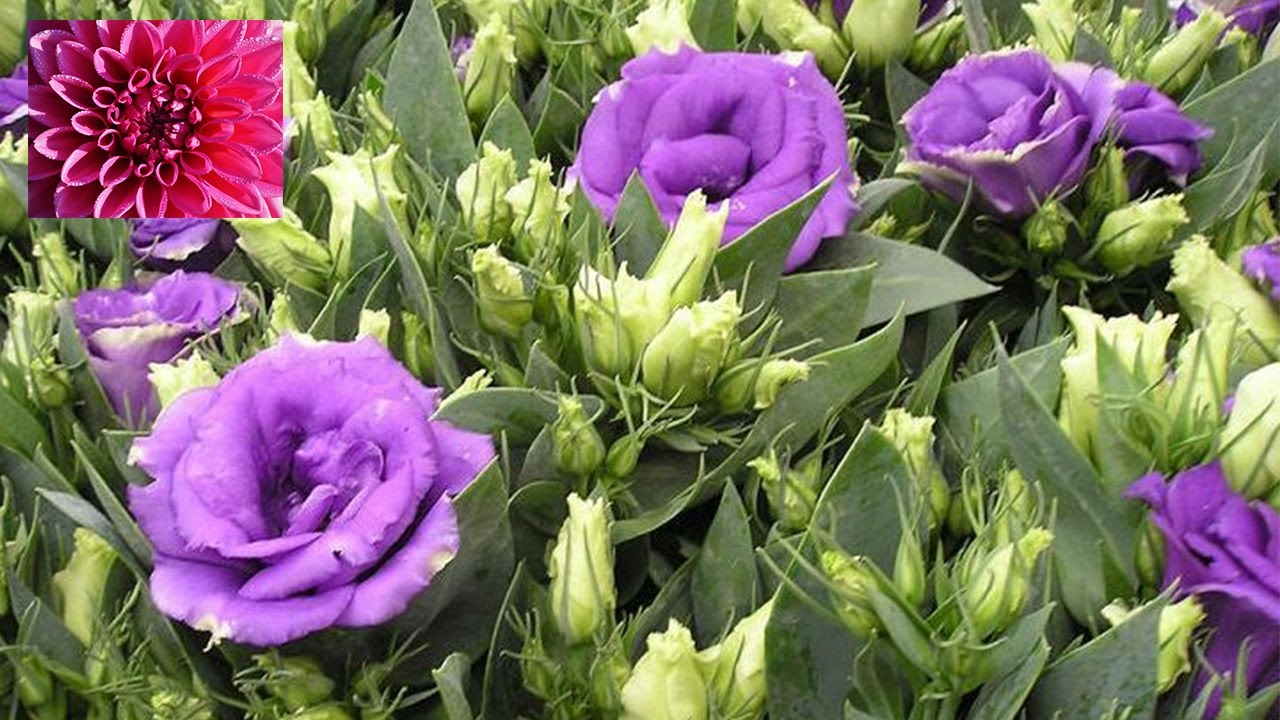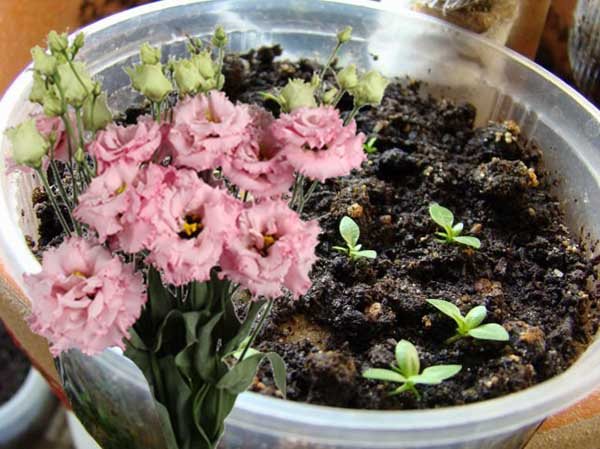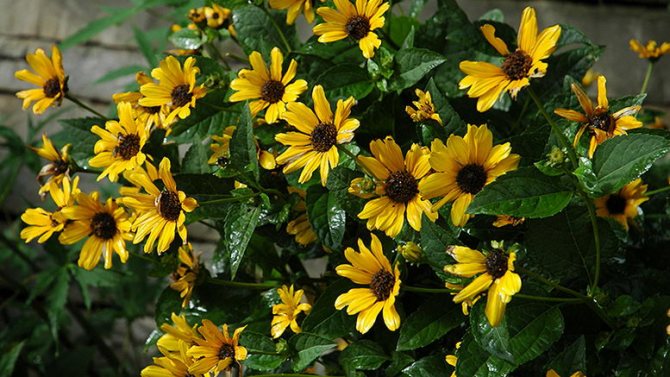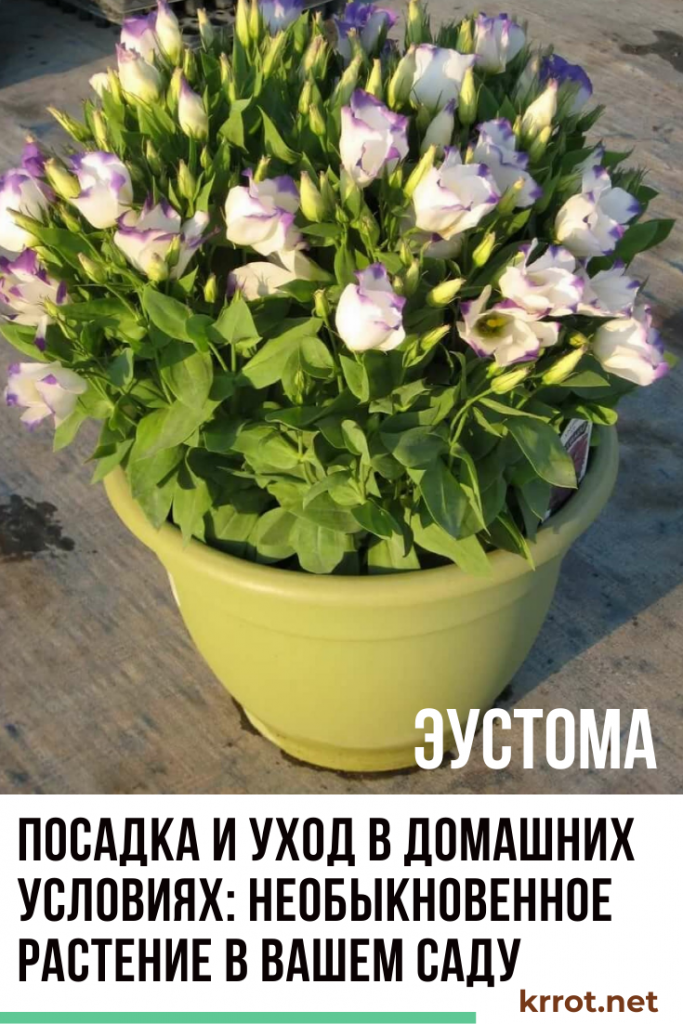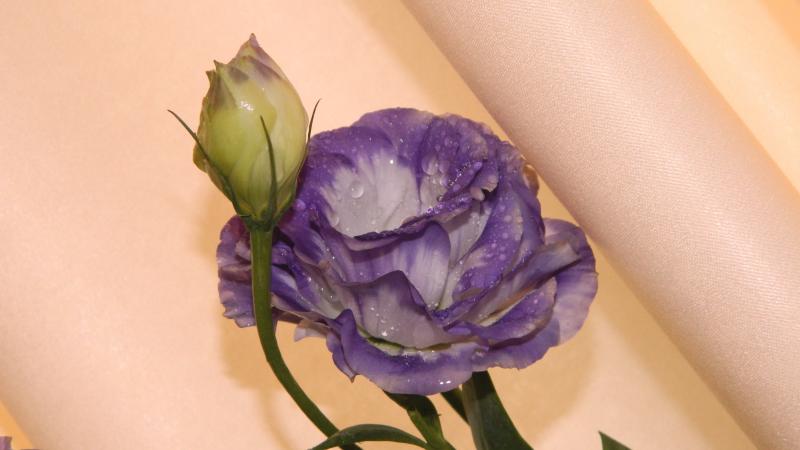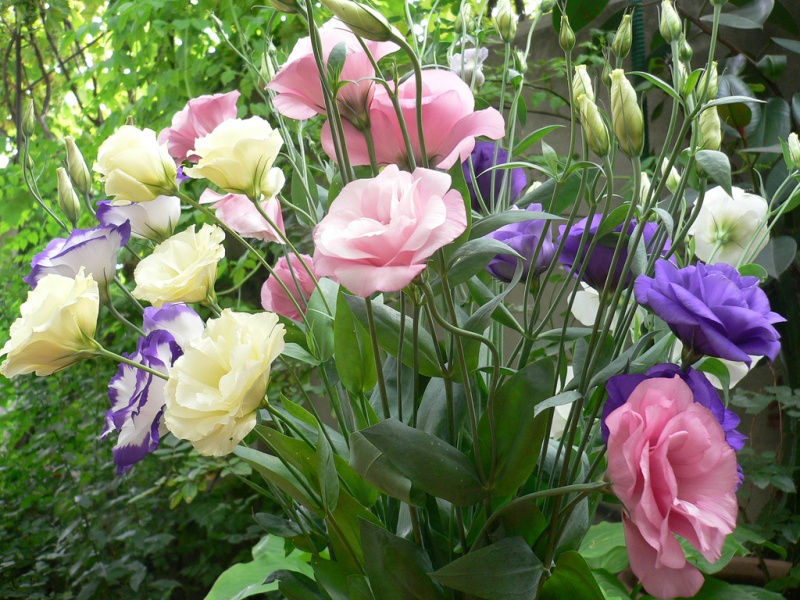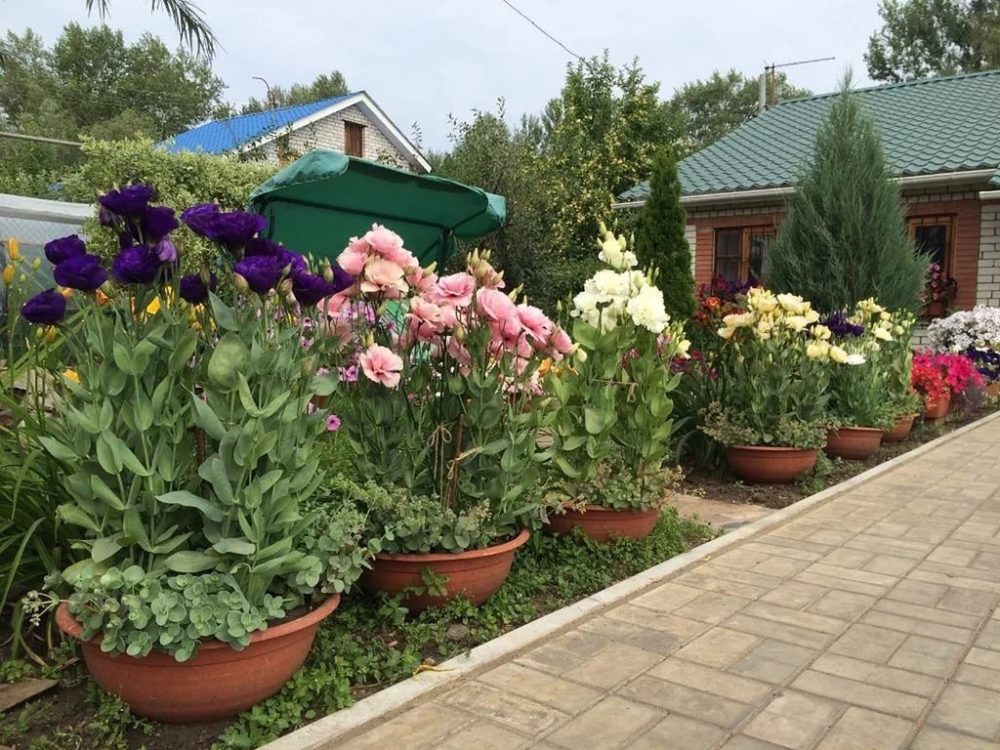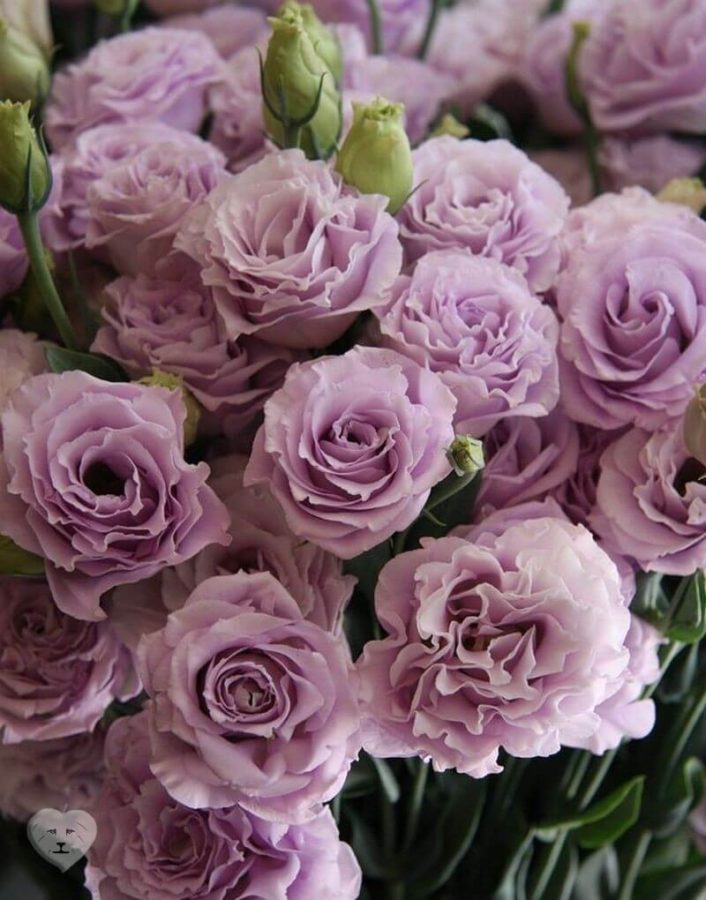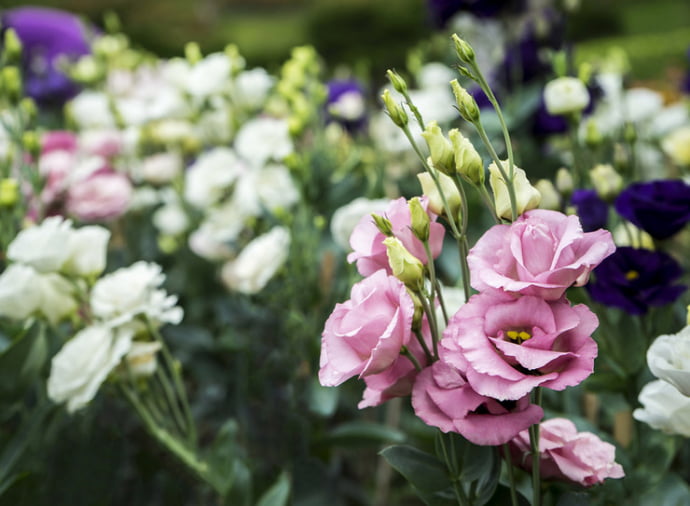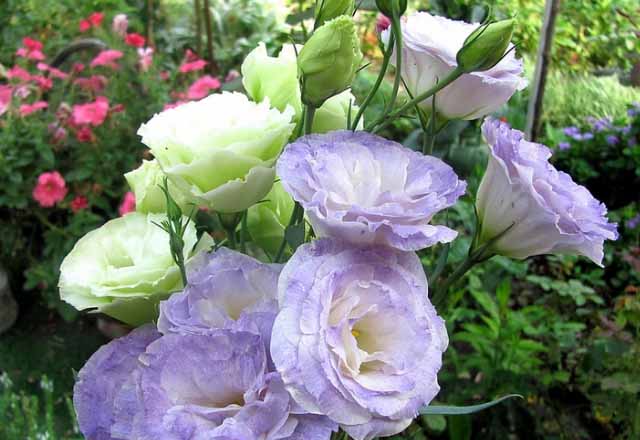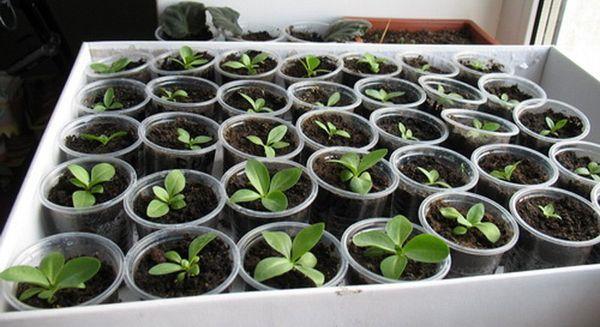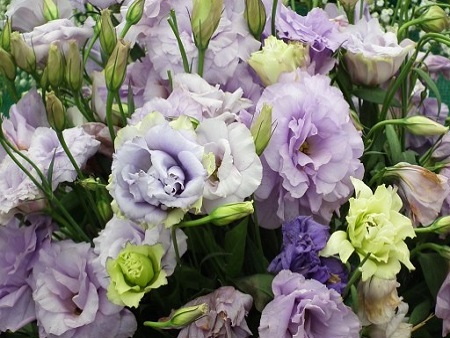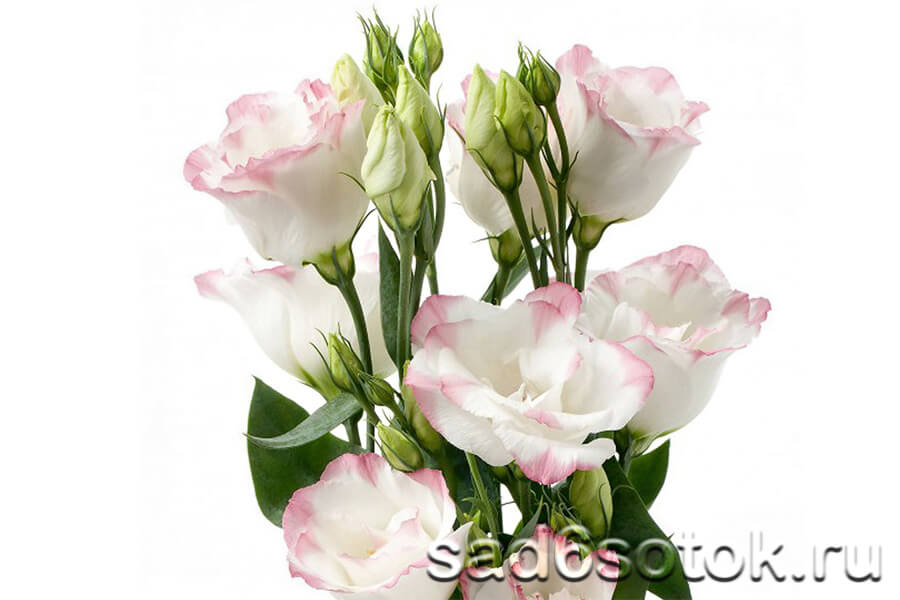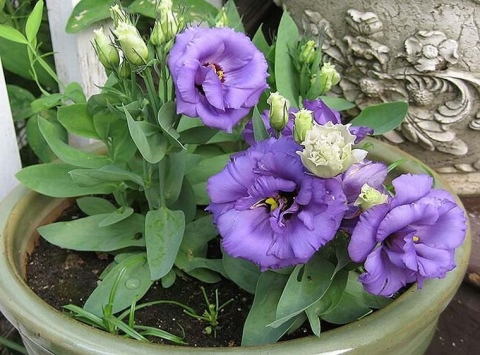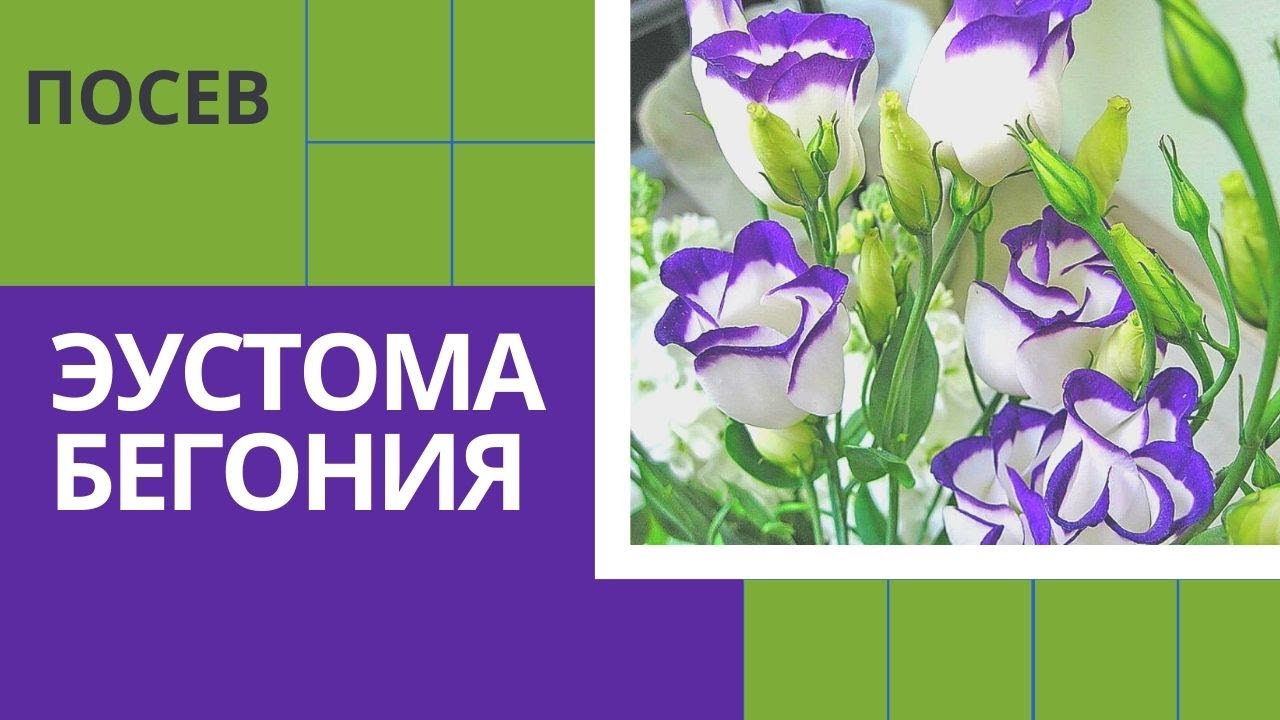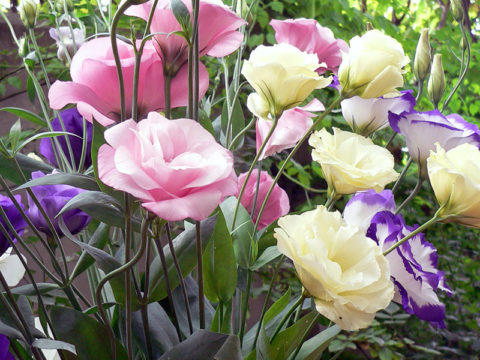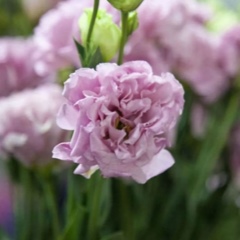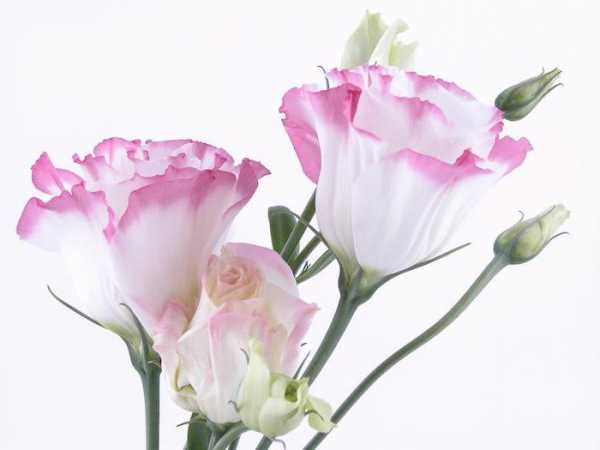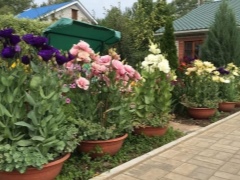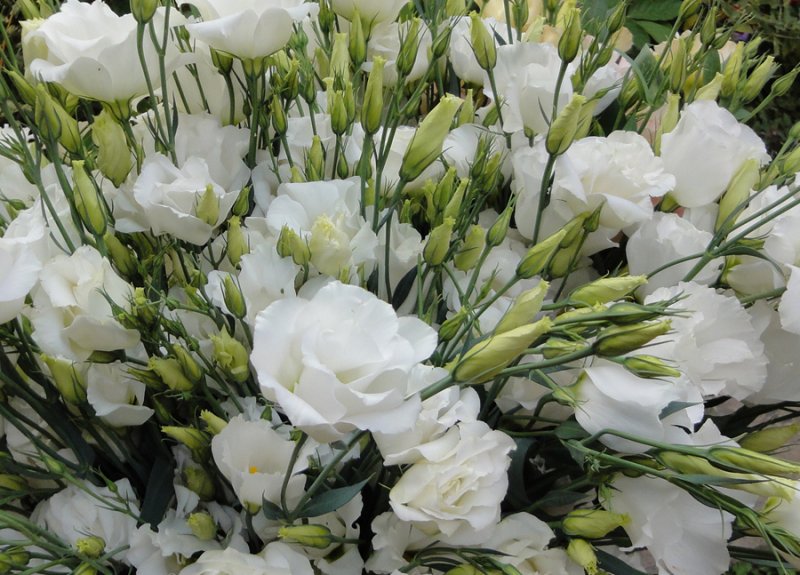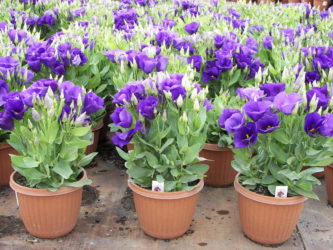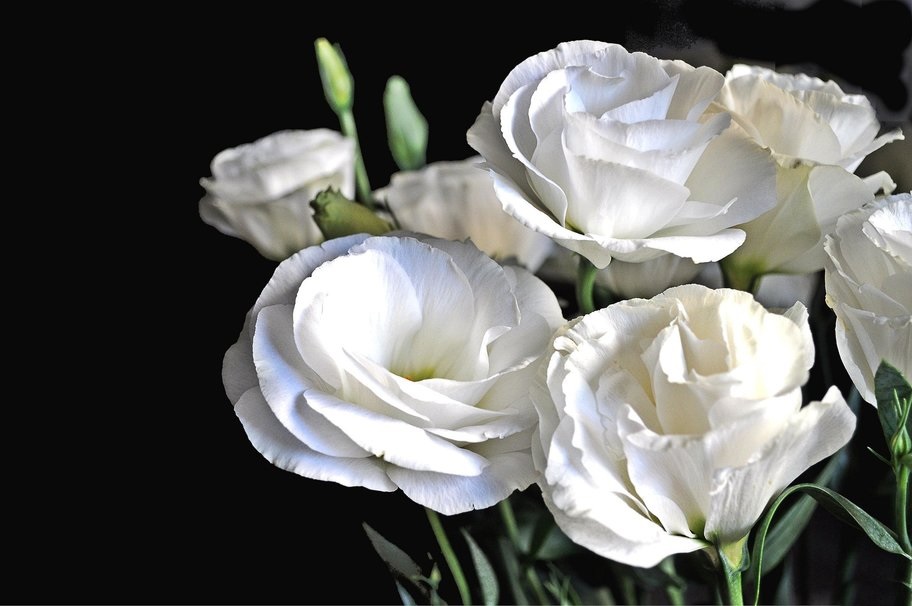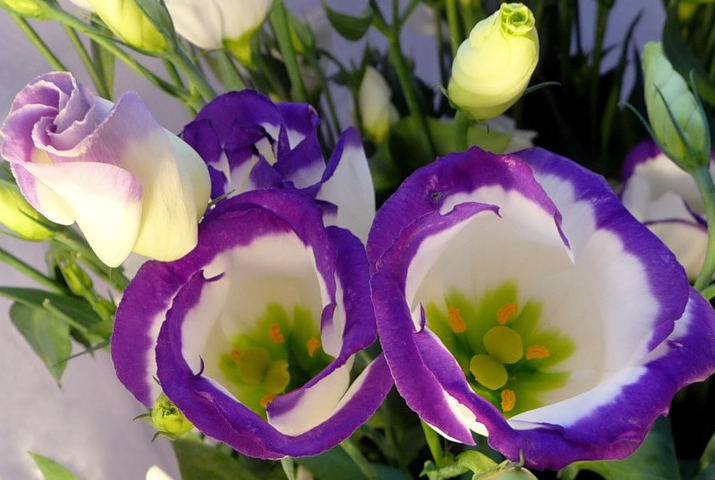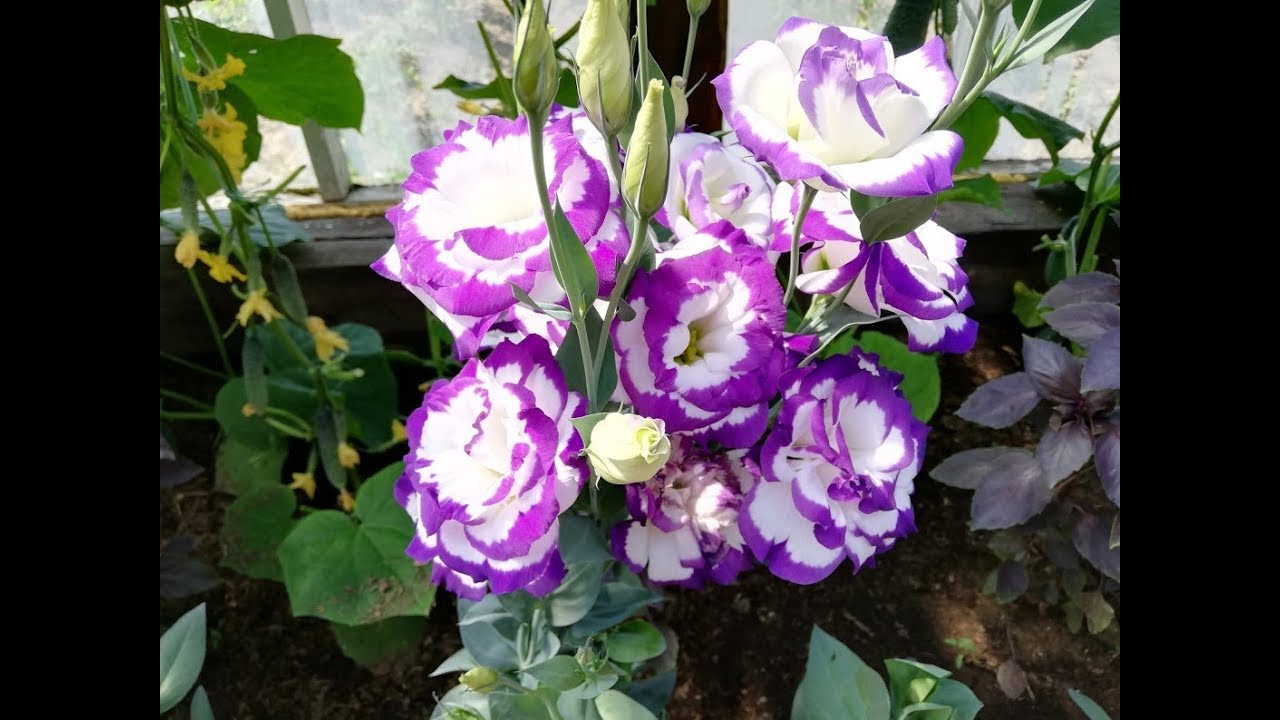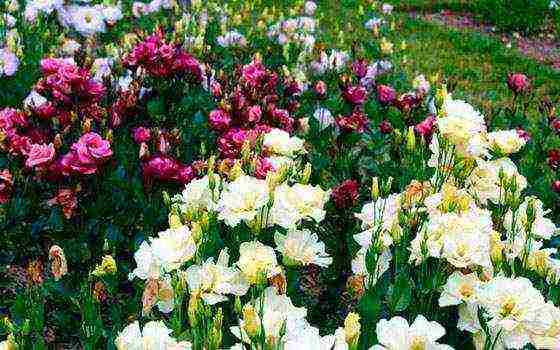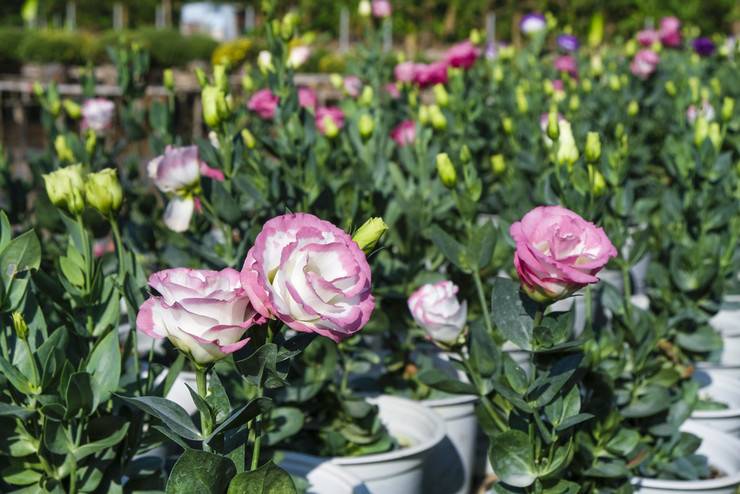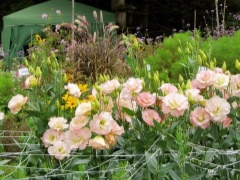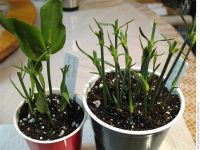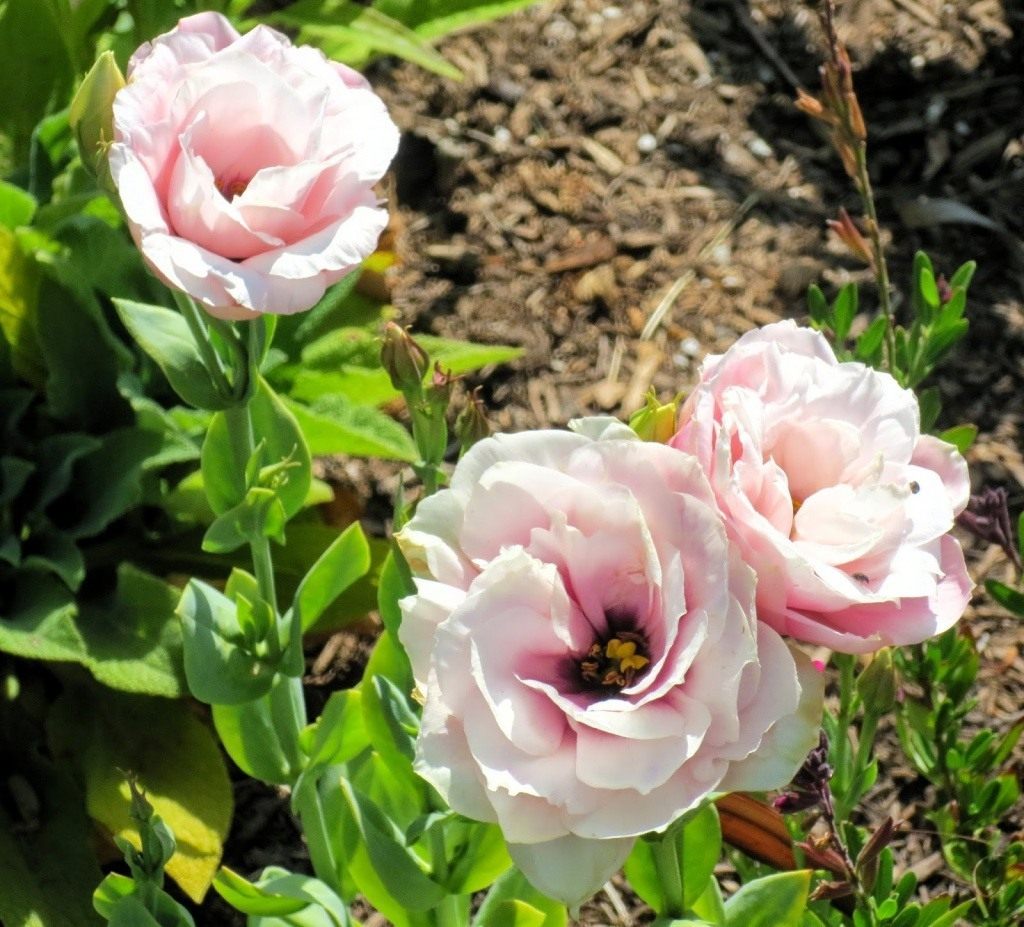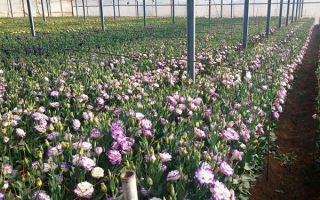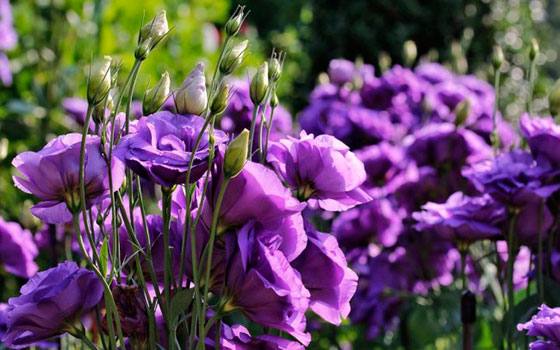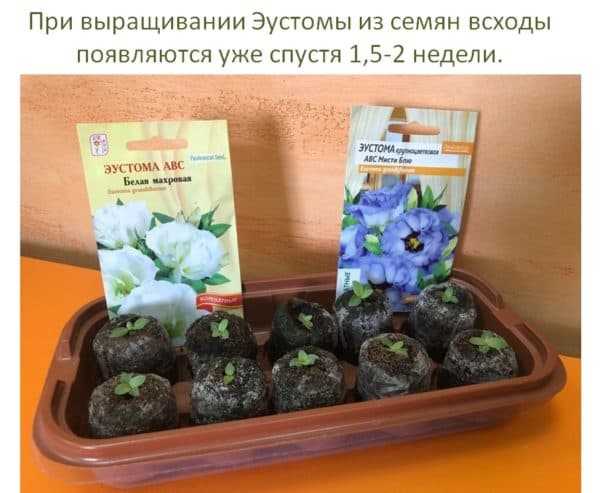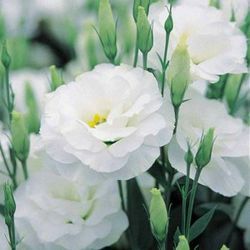Landing rules
In order for the plant not only to take root, but to actively grow and develop, it is important to ensure that all the necessary planting and care rules are followed. For example, one way to plant a plant is to plant it outdoors.
However, before starting this process, it is necessary to sow seeds for seedlings. This procedure is recommended in early spring. If everything is done correctly, then the eustoma will begin to bloom in the summer.

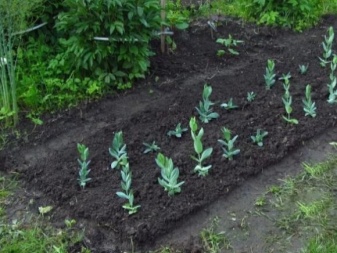
It should be borne in mind that containers or boxes are used for planting plants. Also consider the fact that the potting soil in which the plant will be planted must be sterilized and also contain a small amount of nitrogen. The process of growing seedlings itself consists of several stages. Experts recommend sticking to each of them. First, you need to evenly distribute the small seeds over the entire surface of the earth. After that, the container should be covered with plastic wrap, which will help create the effect of a greenhouse (glass can also be used for this purpose). Do not forget that the plant needs access to clean and fresh air, so it is imperative to leave a hole for this.

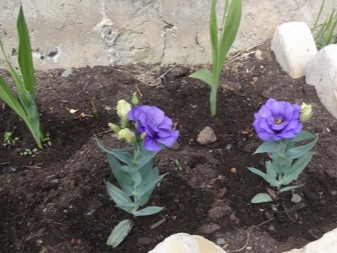
On a regular basis, seedlings need to be sprayed with water from a spray bottle to dry the plant. However, in this sense, you need to be especially careful. In the event that condensation constantly collects inside your makeshift greenhouse, and the ground remains wet, then the spraying procedure may not be necessary. The first eustoma seedlings will appear in 14 days
It is important not to miss this moment, as it is imperative to remove the film or glass from the container. For the prevention of diseases, seedlings can be sprayed with special medicinal solutions, for example, "Fitosporin"

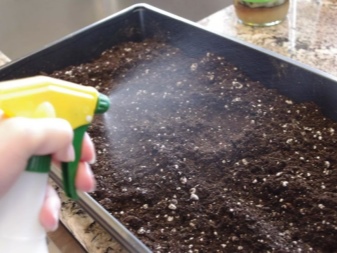
After full leaves appear on the seedlings, the plants should be planted in separate pots (this will happen about 90 days after planting the seeds). And already at the end of May - beginning of June, eustoma is allowed to be transplanted into open ground.
However, this procedure should be done with great care so as not to damage the root system. Outdoor planting is not the only way to grow eustoma
The plant can also grow at home in a pot. The landing procedure itself is similar, only the timing and some details change. So, first you need to take into account the fact that the planting process is carried out in July. A specially designed container is also used for this.

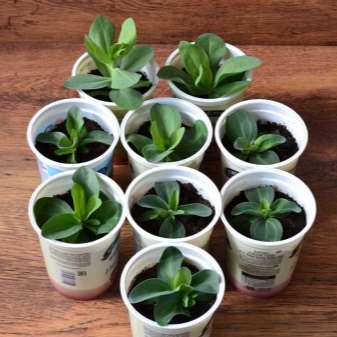
Care features
Eustoma - indoor culture difficult to care for... For a friendly growth, a plant needs certain conditions.
- Lighting. Loves bright light, the sun, but suffers from the action of its direct rays. Placed on the south window, shade in the heat. It grows well on the street - in the summer, the flower is taken out to the balcony or dripped directly into the pot in the garden. They move back to the house in the fall.
- Watering. The soil is moistened when it dries 2 cm deep. Watered in moderation, avoiding waterlogging and stagnation of moisture. Water is used standing or rainwater. Avoid the complete drying out of the earthen coma.
- Humidity. Neutral to any air humidity. It is not recommended to spray the flower.
- Top dressing. During the period of green mass gain, complex nitrogen-containing fertilizers are used. During the budding and flowering period, fertilizers with potassium and phosphorus are applied.
- The soil. The soil in which eustoma will grow well is a homemade mixture of peat and decayed bark. Most store-bought soil is not suitable for growing it.
- Transplants. A flower is transplanted only in case of urgent need. Eustoma reacts painfully to transplants.Transplanting is allowed immediately after wintering. Even minor damage to the root system can result in the death of the flower.
Advice! After flowering, the stems of the flower are cut off, 2-3 internodes are left on them. In winter, they are kept at a temperature of 10-15 ° C, occasionally watered, fertilizers are not applied. They are transferred to the heat when young shoots appear. Gradually introduced into the usual care regimen.
Eustoma - growing, planting, care
Eustoma is gaining more and more popularity among amateur flower growers. If earlier this flower could be found only on the flower beds of "advanced" florists, now it is grown almost everywhere. Or trying to grow, at least. Eustoma may well compete with a common favorite - a rose. Yes, and among the people it is called "Irish Rose", "Japanese Rose", but there is also the nickname "Texas Bell". Eustoma also has a second official name - Lisianthus, which translated into the native language means "bitter flower" (apparently someone tried to eat it).
In nature, eustoma grows in parts of America and the Caribbean. In our country, it is successfully grown both in flower beds and flower beds, and at home, as a houseplant. Cutting eustoma is very good. Here it is a worthy replacement for roses, not only in beauty, but also in terms of the duration of preservation in this state. A bouquet made of eustomas can stand in a vase for three weeks, or even more.
A little about the plant
Eustoma is a fairly tall plant. A whole bunch of three dozen buds can grow on a graceful stem of a meter in height. Eustoma flowers are either double or simple, resembling a poppy in the open state. Their color can be white, lilac, pink, purple. The diameter of the flowers is average, within 5-8 centimeters. Eustoma leaves, green with a bluish tint, are also very beautiful, as if molded from wax. As a garden flower, it is grown as an annual, maximum biennial. At home, the eustoma is a perennial plant.
Types and varieties of eustoma
Currently, about 60 varieties of eustoma are known. At home, it is customary to grow Russell's eustoma. A variety with large flowers is suitable for open ground. There are florists who grow both varieties in the garden. And it does not differentiate between varieties of eustoma. Types of Irish roses differ in height, color, flower shape, as well as the duration of flowering.
The most popular varieties of tall eustoma are listed below:
- Aurora. The flower has blue, white, blue or pink buds and is distinguished by early flowering.
- Echo. It grows up to 70 cm, has spreading stems and large buds. 11 color varieties of this variety are grown.
- Heidi. Reaches a height of 90 cm, is characterized by frequent flowering. The variety has 15 color varieties.
- Flamenco. The tallest and most picky variety, which can reach 90-120 cm. Large flowers have many shades.
For planting eustoma at home, the following varieties are suitable:
- Mermaid. A low, branched plant, stems 12-15 cm long, small flowers can be white, blue, pink or purple in color.
- LittleBell. Reaches a height of 15 cm and does not need a clothespin, has simple funnel-shaped cups in various shades.
- Eustoma Fidelity. White flower up to 20 cm high, on which numerous simple buds are spirally located.
- FloridaPink. A variety that has pink flowers, forming a bouquet of the correct shape.
Lisianthus is one of the most beautiful garden flowers, and if grown correctly, it will not only not create unnecessary difficulties, but will delight the eye.
How to grow eustoma in the garden?
In mid-May, seedlings are planted in a flower bed. Eustoma is ready for transplant when 4-8 true leaves have formed
Some growers have noticed that as soon as the eustoma is planted in open ground, it immediately starts to grow.So in a month you will no longer recognize her
When planting seedlings, you must adhere to the following recommendations:
- It is recommended to plant eustoma in the evening.
- Each plant is carefully removed from the pot with a lump of earth and lowered into a well-watered hole, filling the cavity with earth.
- It is necessary to plant eustoma no deeper than it grew in a pot.
- After planting, cover each plant with a half plastic bottle.
Several secrets of plant care
- Eustoma prefers sunny places where it fully reveals its beauty, therefore, it is planted in the sunniest place in the garden. As for the soil, it grows very well on our black soil.
- The plant needs moderate watering as the soil dries up. To protect against diseases, eustoma is sprayed with foundation a couple of times.
- Eustoma starts feeding after good rooting of the seedlings, about a month after planting. To do this, you can use high-quality mineral fertilizers for flowering plants, which completely dissolve in water (in June they use "Plantafol Growth" with a high nitrogen content, and then in July and August - "Plantafol Budding" with a lower nitrogen content and a high phosphorus content) ...
Collecting seeds
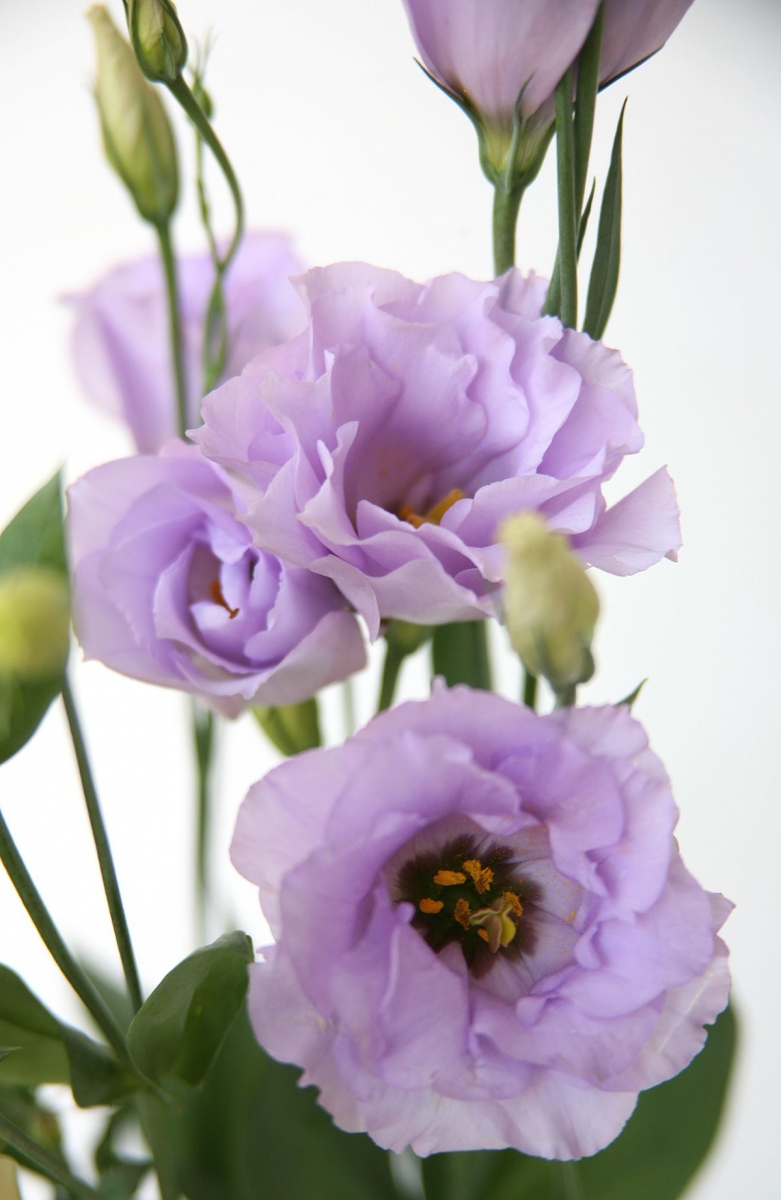 Eustoma is easily pollinated and over time, capsules are formed with many small seeds with high germination.
Eustoma is easily pollinated and over time, capsules are formed with many small seeds with high germination.
It is perfectly possible to harvest seeds if you are growing an F1 hybrid eustoma. The second generation of eustoma resembles the parent plants, but some distinctive features may already appear.
The third generation will have stronger cleavage.
Our advice:
Florists recommend not to grow third generation seedlings - they collect seeds only from F1 mother plants.
We fight diseases and pests
To protect the eustoma from diseases during the cultivation process, it is necessary to periodically carry out preventive spraying with fungicides.
If the summer is rainy, spray the eustoma with foundationazol (or ridomil gold). This is a good prevention and treatment for gray mold, powdery mildew and fusarium wilting, which are especially dangerous for eustoma. It can be sprayed 2-3 times with different preparations.
The main pests of eustoma are aphids, greenhouse whitefly, slugs. Against them, the drugs Confidor, Aktara, Fitoverm, Actellik are used.
Eustoma wintering
Eustoma can be transplanted into a pot in the fall and placed in a cool (10 ° C) and bright room, and in the spring it can be planted again in open ground. The opinions of flower growers differ: some consider this method of wintering to be effective, and some do not.
Svetlana Ryabova, Pyriatyn, Poltava region Ogorodnik magazine Photo: Gennady Marichev
Planting and caring for eustoma in the garden
How to grow eustoma
Garden eustoma can be grown from seed by sowing it in December or January to bloom in June or July. Fifty-milliliter cups are filled with soil mixture for violets and 3-5 seeds are laid out on top, slightly pressing them into the ground, and covered with a film so that the eustoma grows like in a greenhouse. The film will have to be lifted every 10 days to remove condensation from it and allow the seedlings to breathe a little. The optimum temperature for emergence in two weeks is 20-25 ºC. For the first couple of months, seedlings also need additional lighting, but even with all these necessary conditions, the seedlings will grow very slowly. At the end of February, seedlings are placed on a sunny windowsill.
In the photo: Growing eustoma in the ground
Planting eustoma for seedlings
As a prophylaxis of diseases, spray the seedlings with a Fundazole solution at the rate of 1 teaspoon per 1 liter of water, and for faster growth - with Zircon or Epin. A month and a half after the emergence of shoots, when they already have a couple of leaves, dive the seedlings into pots of 3-5 pieces, immersing them in the ground along the lower leaves. Remember to water and put a plastic bag over each pot for a greenhouse effect.
After a week, the seedlings will double in size. At the end of February or the beginning of March, transplant the seedlings into larger pots (diameter 8 cm) together with an earthen lump using the transfer method, placing a drainage layer in the pots first. Now they will grow up, waiting for landing in the ground.
In the photo: Eustoma seedlings at home
Growing eustoma in the garden
In mid-May, when the risk of frost is over, the seedlings are planted in open ground. A place for eustoma is chosen protected from drafts, with good drainage, light, but the light should be diffused. Landing is carried out in the evening or in cloudy weather. A seedling is immersed in a well-moistened hole along with a lump of earth in which it grew in a pot.
Eustoma grows as a bush, so it should be planted at a distance of 10-15 cm from each other. After planting, cover the seedlings for the first 2-3 weeks with glass jars or cut plastic bottles, and do not water them during this time. We have already written about watering, we will clarify only once again: the eustoma is harmed by both increased soil moisture and a lack of moisture.
In the photo: Eustoma flowering in a flower bed
When 6-8 leaves are formed on the stem, pinch the top so that the plant branches better. Approximately a month after planting, when the seedlings are already well rooted, they need to be fed with soluble mineral fertilizers. Plantafol is suitable for this purpose. In June, spray the eustoma with Plantafol growth with an increased nitrogen content, and in July and August with Plantafol budding solution. You can use the drug Kemira, it is dissolved in water and the plants are watered at the root. Just try to use drugs in a slightly lower concentration than the manufacturers suggest.
The beginning of eustoma flowering depends on when you sow the seeds. If the sowing took place in late November or early December, then the eustoma will begin to bloom in early or mid-July - it also depends on what spring will be. If you sow the seeds in mid-January, then flowering will most likely begin in August. After the beginning of flowering, this process does not stop until the end of October: some buds fade, others bloom, and so on.
Blooming eustoma is not frightened by early frosts, and only at -10 ºС frost and snowfall can eustoma flowering stop. If your eustoma faded early, cut off the wilted flowers, and, quite possibly, the eustoma will bloom again in six weeks.
In the photo: Eustoma flowering in a pot on a windowsill
Among the pests of eustoma, aphids, slugs, whiteflies and spider mites are dangerous. To protect against insects, you should use Aktar, Fitoverm, Actellik or Confidor. Eustoma is affected by powdery mildew, fusarium or gray rot, from which it can be protected by prophylactic spraying with Fundazol or the use of the drug Ridomir Gold.
Eustoma at home
Planting eustoma
If you want to decorate an apartment with a blooming eustoma in the winter, sow from July to September. Fill a small container with wet sand and peat (1: 1) and sprinkle the seeds over it. Place the container covered with foil or glass in a warm (19-22 ºC) and bright place, spray the seeds, if necessary, and after two to three weeks you will wait for germination.
In the photo: Growing eustoma seedlings in tablets
Eustoma seedlings
As soon as the seedlings have the first pair of leaves, the amount of moisture is reduced, allowing the topsoil to dry out between waterings. In the future, moisturize only in the morning so that, in order to avoid black leg disease, the leaves are already dry in the evening and at night. When the sprouts have two pairs of leaves, you can dive them into separate pots and wait for flowering, which should come in January-February.
In the photo: Eustoma seedlings in pots
Eustoma care at home
Growing eustoma in pots is not easy, as it desperately needs fresh air and bright diffused light.The best way out of the situation is a western or eastern window in the room with the ability to maintain the optimum temperature for the plant 19-22 ºC with regular ventilation. In addition, caring for eustoma involves moderate watering with settled soft water as the topsoil dries out.
Try to avoid both waterlogging and drying out of the soil. It is not necessary to spray the plant, as this can lead to leaf diseases.
During the period of intensive growth and during the period of bud formation, it is necessary to feed the eustoma with liquid complex fertilizers in a consistency of 10-15 ml per 10 liters of water. And, of course, it is necessary to remove wilted flowers in time. Try to comply with these conditions, and your eustoma in 90-100 days will delight you with its flowering again.
In the photo: Growing eustoma on a windowsill
How, when and where to plant a flower
Eustoma is grown by the seedling method. Sowing is done in February, at the latest in early March. Flowering in this case occurs in July-August.

Three types of nutrient medium are suitable for seedlings:
- a soil mixture prepared independently from peat and humus from tree bark in equal proportions. the second component is easily replaced with coconut flakes;
- shop soil for seedlings with a neutral or slightly acidic reaction;
- peat tablets, which are also purchased from a garden store.
To plant seeds, the containers are soaked for a day, then several pelleted seeds are buried in them. transplanting into open ground is carried out directly in peat cups.
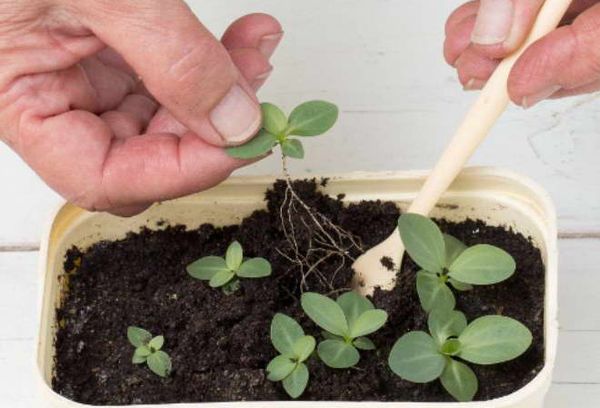
Landing rules:
- A drainage layer of fine expanded clay is poured onto the bottom of the pot.
- The soil is slightly moistened.
- Seeds are placed at intervals of 2-3 cm and slightly pressed to the ground.
- It is impossible to sprinkle it with earth, otherwise they will not germinate due to their small size.
- The boxes are covered with foil or a transparent lid, but always with holes for ventilation.
- Moisten the planting by spraying from a spray bottle, since a stream of water can deepen or wash away the seeds.
- On the 15th day, when the shoots break through, the shelter is removed.
Further care of the seedlings:
- It is best to avoid large fluctuations in day and night temperatures. Optimal conditions for keeping - + 20-22 ° C, in any case, the thermometer should not fall below 14 degrees Celsius.
- To disinfect seedlings, they are sprayed with Fitosporin solution.
- Eustoma requires a long daylight hours, at least 12-14 hours. To ensure this, a phytolamp is connected.
- Water the seedlings in moderation, even sparsely. In the evening, the condition of the seedlings is assessed: if the leaves are not dry, then you should not rush to watering. Excess moisture leads to dangerous fungal diseases, including black leg. Flowers struck by her are almost impossible to save.
- Strongly affects the condition of the sprouts and the way the soil is moistened. So, tap water must be defended during the day.
Picking
After 1.5-2 months, the grown seedlings are settled in separate containers. The height of the shoots at this point is usually 4-5 cm, the stems have several pairs of true leaves. The procedure is carried out very carefully, since the Lisianthus root system is not stable.
Operating procedure:
- The soil is taken the same as the one in which the seeds were germinated.
- The dimensions of the new pots are approximately 6 cm in diameter.
- The boxes are filled with soil, in the center they make a depression the size of the root system of the sprout.
- The seedlings are watered and a thin object is poured in, separating the sprouts from each other.
- The seedling is transferred into a new pot along with an earthen lump.
- Then they drop it with soil so that the root collar remains at the same level as in the previous box.
- Immediately after picking, the seedlings are watered with a phytosporin solution. This preventive measure will protect delicate flowers from fungal and putrefactive diseases.
- After watering, the root collar can protrude above the soil level. In this case, it is sprinkled with earth.
- For the first time, the pots are again covered with polyethylene for faster adaptation.
- The picking procedure is repeated when the sprouts fill the entire space of the intermediate box.
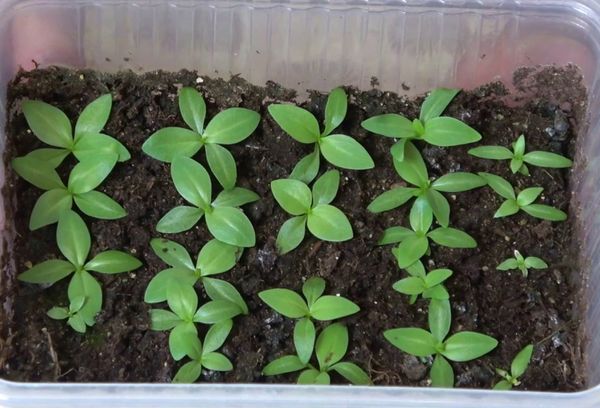
How to properly care for eustoma
In caring for an ornamental plant, it is important to maintain the level of soil drainage by regularly loosening and removing weeds. It is not necessary to water the eustoma with a large amount of water: small but regular doses are enough
Drip irrigation is ideal for this flower. After watering, be sure to cover the root zone with mulch. If you go through with the volume of water, the root of the plant will surely be affected by the fungus. If the soil is overdried, the eustoma will shed its buds.
Other nuances of proper flower care:
- Up to twice a month, he needs light feeding with complex fertilizers.
- The stems of tall varieties are not strong enough to hold a ripe bud. Tie them to a support.
- To prolong flowering, check and remove faded or tainted buds.
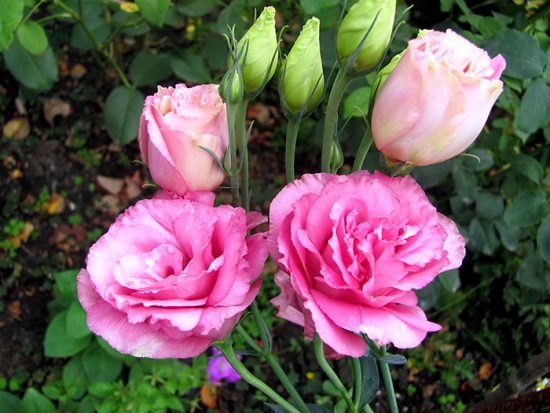 Blooming eustoma may need support
Blooming eustoma may need support
The flower dies even with minimal frost. To preserve the plant for next season, transplant it into a container filled with garden soil in October. Further, two ways are possible:
- Move the container to the room. Flowering may continue, although not as intensely as in summer.
- Trim the peduncles so that only a couple of internodes remain on them. Place the container in a bright room with low humidity at a temperature of about + 10 ° C. Water while keeping the soil slightly moist. Increase the dose of water in February.
In early summer, the flower can be returned to an area under the open sky. Be prepared for the fact that when moving from the street to a warm room, the plant may begin to wither. Don't be alarmed, this is an adaptation. To help the flower overcome stress, keep watering to a minimum.
Attention! In the second season, eustoma blooms less.
Care rules
Eustoma care consists of a standard set of procedures: moisturizing, weeding, loosening, feeding.
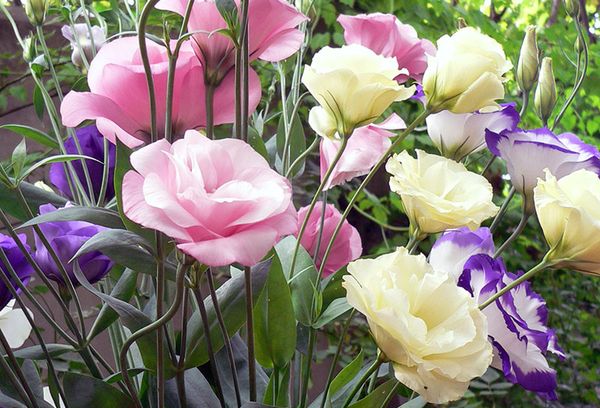
To "beautiful lips" bloom magnificently in a flower bed, you must follow the advice of experienced gardeners:
- The time in the light and in the shade should be approximately equal in duration. Direct sunlight is only useful for early germination of seeds.
- Each subsequent watering is carried out after the top layer of the soil has dried.
- After watering, the soil is mulched with a thin layer.
- They begin to feed the flowers after they are securely fixed on the site. A month later, a mineral complex for flowering plants is introduced. The source of nitrogen at the growth stage will be the drug Plantafol Growth. When buds begin to form, nitrogen-phosphorus fertilizer "Plantafol budding" is applied. To prolong flowering, eustoma is fertilized with "Kemira". Experienced growers note that all the recommended proportions of fertilizer on the package should be slightly reduced.
- Flowering begins in mid-summer. Lisianthus buds can last up to two months. If you cut a branch with flowers, a new one will grow in its place and will also delight the gardener with buds.
- All wilted buds must be cut off.
- Trick: to get as many buds as possible, you need to pinch the top of the flower when 6-8 true leaves appear on the stem.
The budding time depends not only on the timing of the transfer of seedlings to open ground, but also on weather conditions. If the summer is rainy, then you need to build a small shelter over the flower bed. If the flowers are exposed to a sharp change in temperature, they may not bloom and even die.





